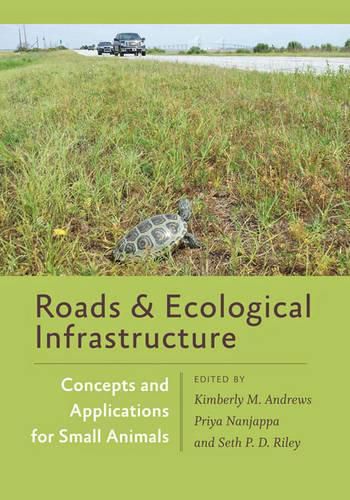Readings Newsletter
Become a Readings Member to make your shopping experience even easier.
Sign in or sign up for free!
You’re not far away from qualifying for FREE standard shipping within Australia
You’ve qualified for FREE standard shipping within Australia
The cart is loading…






Few of us think twice about driving on roads. Yet the very presence of roads and the act of driving on them can impact the ecological infrastructure that supports an animal’s daily life. What chance does a turtle have of successfully laying its eggs when it needs to traverse a busy highway? Is it realistic to expect small mammals to breed when an interstate thoroughfare subdivides their population? These are the sorts of challenges faced by small, often slow-moving, animals, challenges that road engineers and ecologists are trying to address. For countless small species, vehicles traveling at high speeds are nothing less than missiles shooting across migration pathways. For too many animals, the danger can lead to the loss of populations, in part because they simply are not programmed to react to traffic. Salamanders faced with a two-lane road between the forest and their aquatic breeding site, for example, will typically cross that road regardless of the congestion. The result can be hundreds of flattened animals in a single night. Roads and Ecological Infrastructure is the first book to focus on reducing conflict between roads and small animals. Highlighting habitat connections and the challenges and solutions from both transportation and ecological perspectives, the volume covers various themes, including animal behavior related to roads and design approaches to mitigate the negative effects of roads on wildlife. The chapter authors-from transportation experts to university researchers-each promote a goal of realistic problem solving. Conceptual and practical, this book will influence the next decade or more of road design in ecologically sensitive areas and should prevent countless unnecessary wildlife fatalities.
$9.00 standard shipping within Australia
FREE standard shipping within Australia for orders over $100.00
Express & International shipping calculated at checkout
Few of us think twice about driving on roads. Yet the very presence of roads and the act of driving on them can impact the ecological infrastructure that supports an animal’s daily life. What chance does a turtle have of successfully laying its eggs when it needs to traverse a busy highway? Is it realistic to expect small mammals to breed when an interstate thoroughfare subdivides their population? These are the sorts of challenges faced by small, often slow-moving, animals, challenges that road engineers and ecologists are trying to address. For countless small species, vehicles traveling at high speeds are nothing less than missiles shooting across migration pathways. For too many animals, the danger can lead to the loss of populations, in part because they simply are not programmed to react to traffic. Salamanders faced with a two-lane road between the forest and their aquatic breeding site, for example, will typically cross that road regardless of the congestion. The result can be hundreds of flattened animals in a single night. Roads and Ecological Infrastructure is the first book to focus on reducing conflict between roads and small animals. Highlighting habitat connections and the challenges and solutions from both transportation and ecological perspectives, the volume covers various themes, including animal behavior related to roads and design approaches to mitigate the negative effects of roads on wildlife. The chapter authors-from transportation experts to university researchers-each promote a goal of realistic problem solving. Conceptual and practical, this book will influence the next decade or more of road design in ecologically sensitive areas and should prevent countless unnecessary wildlife fatalities.